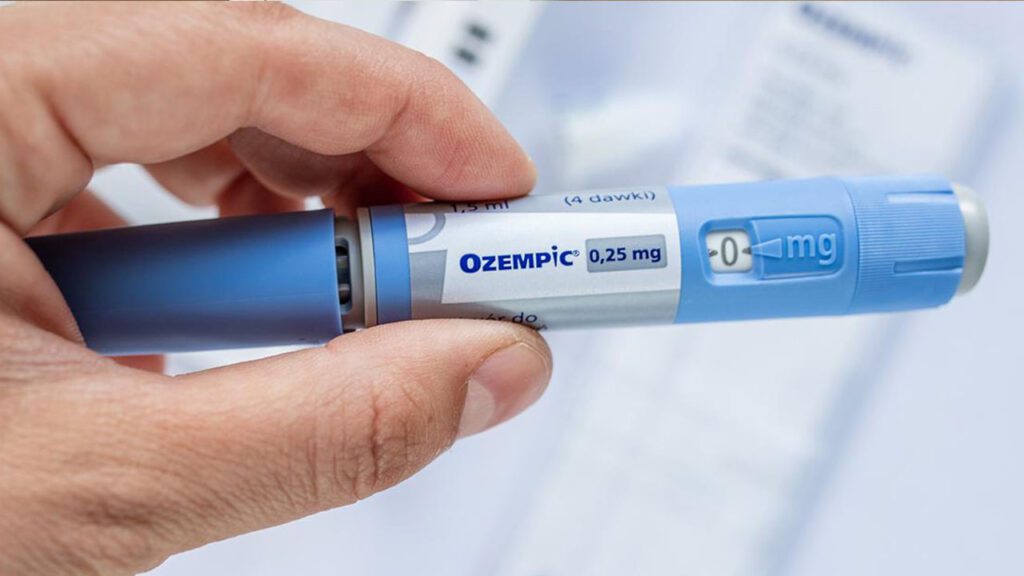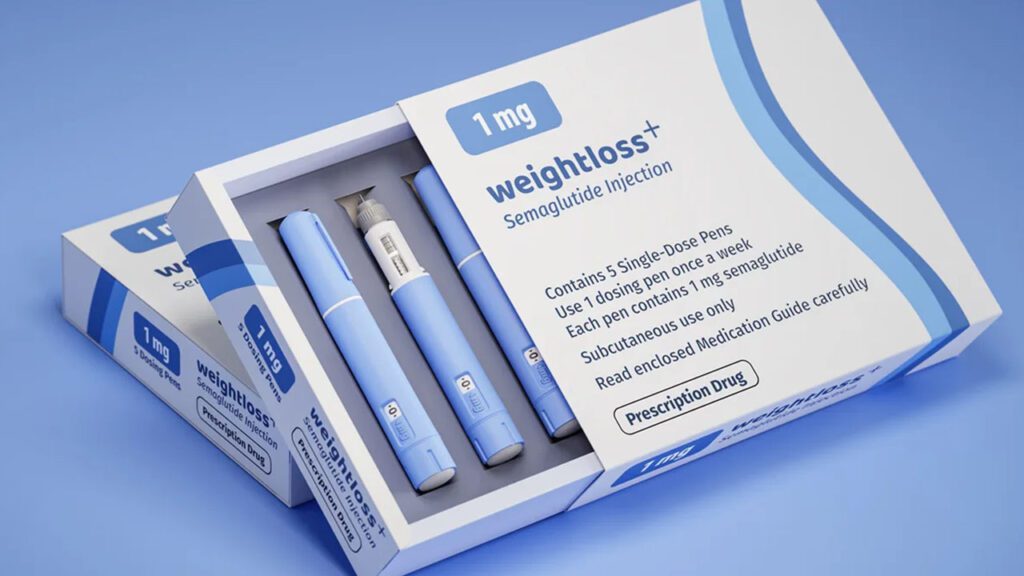GLP-1 Drugs: Cost, Benefits & Side Effects in the USA | 2025 Guide
If you’ve been surfing TikTok or watching your favorite health show, you’ve probably heard about GLP-1 Drugs: Cost, Benefits & Side Effects—and that’s no coincidence. These medications are all the buzz for good reason: they’re reshaping how we treat type 2 diabetes and obesity in the USA. GLP-1 Drugs: Cost, Benefits & Side Effects pack a potent punch—they help control blood sugar, curb appetite, and support weight loss, but come with a price tag and quirks you need to know about. Let’s walk through what they cost, why folks are turning to them, and what side effects might make you pause.
What Are GLP-1 Drugs and How Do They Work?
GLP-1 agonists—including semaglutide (Ozempic, Wegovy), tirzepatide (Mounjaro, Zepbound), liraglutide (Victoza, Saxenda), exenatide, and others—mimic the body’s glucagon-like peptide-1 hormone. They do three smart things at once: stimulate insulin, slow stomach emptying, and signal fullness to your brain. That triple threat helps with blood sugar control and weight loss, making them effective for type 2 diabetes and obesity.
Cost in the USA: What’s the Damage?
Here’s a reality check: GLP-1 Drugs: Cost, Benefits & Side Effects aren’t cheap. Annual US patient costs range from about $6,000 to $8,000 after discounts. University of Chicago researchers note monthly prices hover at $700–800, pushing them outside cost-effectiveness benchmarks despite long-term health benefits. Some brands like Wegovy can cost up to $32,000 debut year, with Ozempic ringing up to $15,000–16,000 a year. Coverage is patchy, too—Medicare does not cover them for weight loss, only diabetes, and many stop within a year due to costs or side effects.
Table: Estimated US Costs of GLP-1 Drugs
| Drug (Brand) | Annual Cost Estimate (USD) |
|---|---|
| Semaglutide (Ozempic/Wegovy) | $6,000–8,000 (actual), up to $32,000 in year one for Wegovy |
| Tirzepatide (Mounjaro/Zepbound) | ~$6,000/year post-discount |
| Ozempic alone (diabetes-focused) | $15,000–16,000/year |
| Rybelsus (oral semaglutide) | >$14,000/year |

Top Benefits of GLP-1 Drugs
- Impressive Weight Loss & Blood Sugar Control
- Clinical trials show 15–20% weight loss—well above traditional methods.
- Effectively control blood glucose where other diabetes meds might actually cause weight gain.
- Cardiovascular & Metabolic Wins
- Semaglutide has shown cardiovascular risk reduction in certain patients.
- Broader metabolic benefits: may slow chronic kidney disease, manage sleep apnea, and prevent diabetes onset.
- Global Health Impact
- Added to the WHO Essential Medicines List for diabetes—a step toward better access globally.
- Insurance Battles & Life Industry Effects
- Life insurers are scrambling as GLP-1 users may appear lower-risk based on improved metrics—something called “mortality slippage” Investopedia.
Potential Risks & Side Effects
- Gastrointestinal Symptoms
Nausea, vomiting, diarrhea, constipation, bloating—often common early on or when doses increase Cleveland Clinicpcom.eduOchsner Health System Could affect 40–70% of users. - Treatment Drop-Off
High discontinuation rates: >50% stop within 12 months. - More Serious Concerns
Gastroparesis risk is nearly four times higher in some patients.
Boxed warning: risk of thyroid C-cell tumors; contraindicated if personal/family history of medullary thyroid cancer or MEN2 syndrome. - Risks of Compounded/Illicit Versions
FDA warns of dangers with compounded drugs—dose inconsistencies, errors, unsafe formats. - Lower Blood Pressure Naturally Fast: 10 Home Tips to improve Health
Real-World Example
Former FDA chief David Kessler lost over 60 pounds and halved his body fat using GLP-1 drugs—but also endured nausea, chills, bloating, and abdominal pain. He urges intermittent use studies and more safety data.
Smooth Transitions & Human Tone
If you’re thinking, “That’s a lot to unpack!”—you’re right. The cost is steep, the payoff is huge, and the side effects can be rough. But that doesn’t mean these drugs aren’t life-altering for many. Let’s break it down step-by-step.
How to Navigate Them Smartly (USA-Led Guide)
- Step 1: Doctor Chat
Not just TikTok advice—consult your physician. Discuss your goals: diabetes, obesity, heart risk. - Step 2: Insurance & Cost Check
Ask if coverage is possible or if generics/discount programs help. - Step 3: Start Slow
Gradual dosing helps reduce GI side effects. - Step 4: Monitor & Adjust
Track side effects, weight trends, blood sugar. Adjust with your provider. - Step 5: Review Regularly
Many try deprescription after goals hit—but be careful; weight often returns. - Step 6: Avoid Gray-Market Drugs
Stick to FDA-approved products—safety matters.
Authoritative External Links
- UChicago study on long-term health benefits vs costs (University.edu)
- FDA or WHO info—for safety or essential medicine status

10 Related Questions & Answers –
1. How much do GLP-1 drugs cost per month in the USA?
GLP-1 drugs like Ozempic, Wegovy, and Mounjaro typically cost between $700 and $1,200 per month in the USA without insurance. Annual costs can exceed $6,000–$12,000, making affordability a major barrier for many patients. Prices may be slightly reduced with discount cards, coupons, or through employer-based coverage.
2. Are semaglutide injections covered by insurance?
Coverage for semaglutide varies widely. For diabetes management under the brand Ozempic, many insurance plans including Medicare Part D often provide coverage. However, for weight loss under Wegovy, coverage is more limited, with some private insurers covering it but Medicare generally excluding weight-loss use.
3. What are the side effects of Ozempic and Wegovy?
The most common side effects are nausea, vomiting, diarrhea, constipation, and bloating. These gastrointestinal issues affect more than half of users, especially during the first few weeks. Serious but rare risks include gallbladder issues, pancreatitis, and thyroid-related warnings.
4. GLP-1 vs tirzepatide: which is better?
Both are effective, but tirzepatide (Mounjaro/Zepbound) has shown slightly higher weight loss results in trials compared to semaglutide. However, side effect profiles and insurance coverage may influence which option works best for individual patients.
5. Can GLP-1 drugs reverse diabetes?
GLP-1 drugs do not cure diabetes but they can improve blood sugar control and, when combined with weight loss, may lead to remission in some type 2 diabetes patients. Remission means blood sugar remains in the normal range without medication for a period of time.
6. Is Medicare covering weight loss medications?
Currently, Medicare does not cover GLP-1 drugs when prescribed solely for weight loss. It only covers them for diabetes treatment. This policy has been widely debated, and updates may come in the future.
7. How long do I need to stay on GLP-1 drugs?
Most people need to stay on GLP-1 drugs long term to maintain weight and blood sugar benefits. Stopping usually leads to weight regain and higher glucose levels, so ongoing use is often recommended.
8. Are there oral GLP-1 drugs coming soon?
Yes, oral semaglutide is already available under the brand Rybelsus for diabetes, and more oral versions are being researched to expand options beyond injections.
9. How to manage nausea from GLP-1 drugs?
Starting with a lower dose, eating smaller meals, avoiding fatty foods, and staying hydrated can reduce nausea. Doctors may also adjust dosing schedules to ease side effects.
10. Are GLP-1 drugs safe long term?
Current studies suggest they are generally safe with long-term use, especially for diabetes and obesity. However, risks like gastroparesis, gallbladder issues, and potential thyroid concerns mean ongoing monitoring with a healthcare provider is essential.
You must need to know
Good habits/pros vs Bad habits/cons
When using GLP-1 drugs, developing healthy habits enhances results while bad habits reduce benefits. Below is a quick chart:
| Good Habits / Pros | Bad Habits / Cons |
|---|---|
| Following doctor’s dose schedule | Skipping or doubling doses |
| Eating smaller, balanced meals | Consuming fatty, sugary foods |
| Staying hydrated and active | Ignoring physical activity |
| Regular check-ups and labs | Avoiding medical follow-up |
| Using FDA-approved products | Buying compounded/illicit versions |
Unknow facts
Many people don’t realize GLP-1 drugs were first designed for diabetes, not weight loss, yet became popular after showing strong weight reduction effects. Another surprising fact is that GLP-1 medications may reduce risks of heart disease, sleep apnea, and kidney disease, benefits beyond just slimming down. Interestingly, stopping the drug often leads to weight regain, which is why many doctors treat them as long-term therapies rather than short fixes.
Competitors/Similar
The strongest competitor to GLP-1 drugs is tirzepatide, a dual GIP and GLP-1 agonist marketed as Mounjaro and Zepbound. Studies suggest it may deliver greater weight loss than semaglutide. Other similar medications include liraglutide (Victoza, Saxenda) and exenatide (Byetta, Bydureon). New oral versions like Rybelsus also compete, giving patients pill alternatives instead of weekly injections.












One thought on “GLP-1 Drugs: Cost, Benefits & Side Effects in the USA | 2025 Guide”